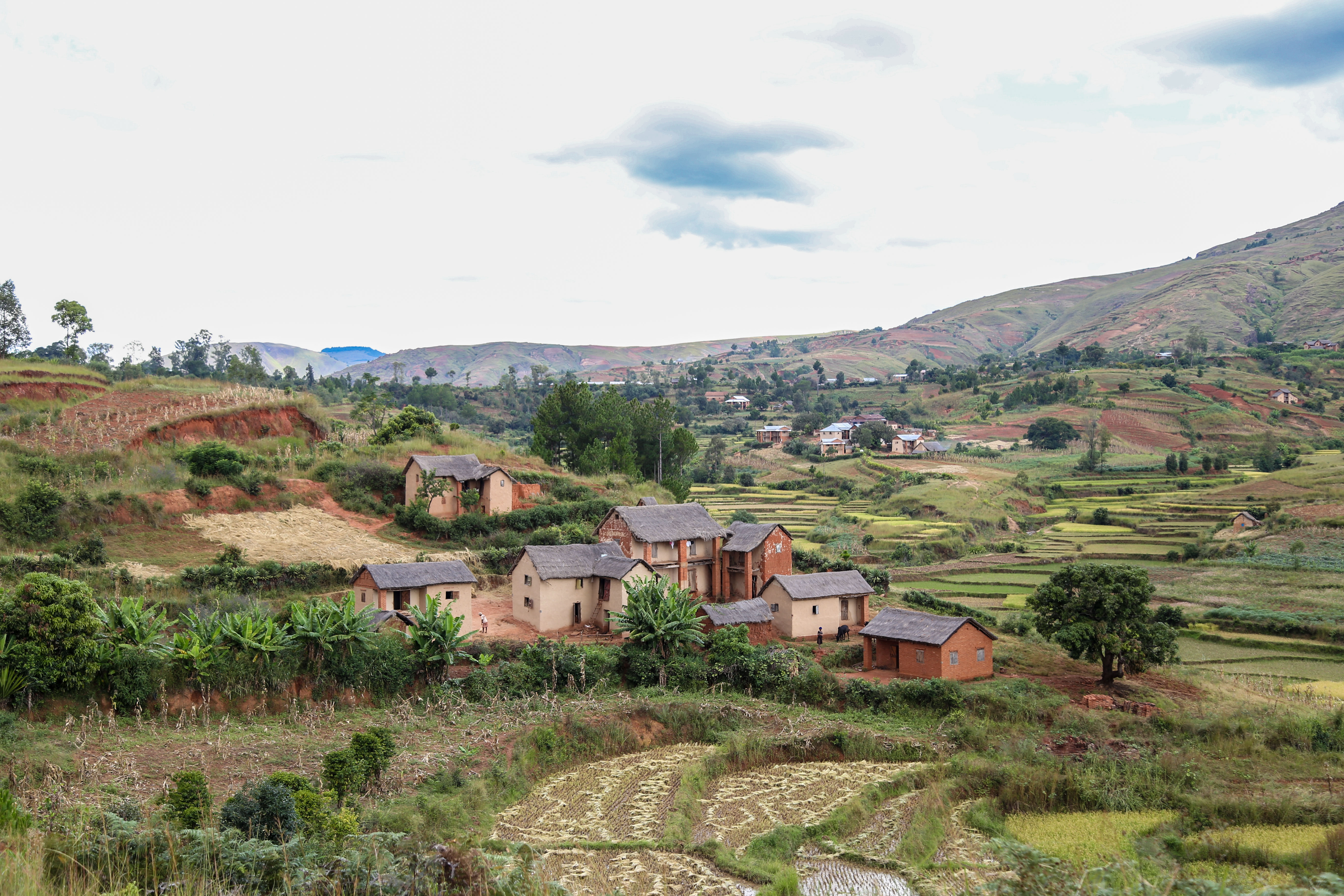
If you are interested in this topic, review the webinar presentation or watch the recorded webinar.
Photo credit: Flickr/boomjack99
Background
Over the last ten years, civil society, government and academia have initiated a flurry of activities to strengthen Evidence-Informed Decision Making (EIDM) to reduce poverty and inequality in Africa. Through these activities, EIDM has immensely gained traction, and this has spurred the increasing demand to justify decision-making in various sectors through the use of evidence. As a result of the growing demand for EIDM, new trends have emerged in the African EIDM ecosystem ranging from institutional landscapes to EIDM practices. Analysing these trends within the ecosystem will facilitate the repositioning of actors and evidence-informed repurposing of initiatives to enhance mutual learning, identify new opportunities and develop new ideas about supporting evidence-informed decision-making. The Africa Evidence Network (AEN) hosted a vibrant discussion under its Webinar series that illuminated current trends and how stakeholders may reposition themselves, including mapping the direction of where the AEN is going. The panel consisted of Professor Ruth Stewart, Director, Africa Centre for Evidence (ACE), Mr Kirchuffs Atengble, Director PACKS Africa, Dr Julian Bagyendera, Executive Director, Provide & Equip, Siziwe Ngcwabe, and Dr Carina van Rooyen from ACE respectively facilitated and moderated the session. These discussions are critical in forming the basis for improving the evidence ecosystem and evidence use in Africa.
The African EIDM Ecosystem
Different actors and institutions from various sectors, formal and informal and with varying capacities and resources, are uniquely gelling to produce, translate, and use evidence in Africa. There are nested regional evidence ecosystems within which national ecosystems also exist in this broader evidence ecosystem. The national ecosystems are sector-specific groupings, which are also streamlined to localised ecosystems. This structure is how intricate the EIDM ecosystem is. In analysing trends, this intricacy posed issues of equity and inclusion in light of the diversity associated with the continent's evidence ecosystem. As an evidence network, how can we ensure that we are not neglecting the communities that perhaps don't have the language or the technology to engage and share because they want to learn, and we need to learn from them too?
Identifying Trends and Rethinking Systems
Various trends are emerging in the EIDM ecosystem as a result of both local and global developments. The COVID-19 pandemic brought a new wave of virtual evidence generation and stakeholder engagement, including dissemination. COVID-19 came with shocks, on one hand, a lot of flexibility and more efficient ways of doing things on another. There have been shifts in research methodologies. For example, African evaluations have started incorporating some indigenous and traditional methods. There is a new push to bring in blended methodologies, particularly given the increasing importance of multidisciplinary and interdisciplinary research. The impact agenda has become the next big thing where we are seeing a fundamental shift within the production side towards research impact and the demand side, particularly the government moving towards linking evidence collation to more strategic knowledge management. The questions arising from these shifts are: What is the evenness in all this? How inclusive are the approaches and methodologies? Which areas should we prioritise, and where have we already done much considering the diversity associated with the African EIDM ecosystem? What does the average African evidence ecosystem represent? These are pertinent questions addressing equity in evidence generation, dissemination, and the capacity to do so. The evaluation community has started to deal with these issues through professionalising the evaluation associations and developing different standards for different countries.
Disconnected Pockets of Innovation and the Political Economy of Evidence
Although there is still more to do in strengthening various capacities, tangible signs of functional ecosystems with pockets of innovation and exciting initiatives exist. For instance, AFREA initiated the institutionalisation of capacity development to formalise processes and mainstream these for real impact. However, these exciting pockets of innovation are not feeding into each other, and the danger is that the silos will grow deeper and become more ingrained if not addressed. The initiatives are also running at regional, national, subnational and, to some extent, community levels. One of the main challenges with these structures is that at the community level, national and sub-national systems seem to lose focus in conceptualising development interventions, including strengthening policy and practice through EIDM. It is imperative to conceptualise the different experiences and perspectives at various layers to ensure equity. The politics in one country may determine evidence use. It is essential to establish how best to manage politics and ensure that decision-makers use evidence without political interference. One way to go around this challenge is to contextualise EIDM interventions. One question that comes to mind is: How does the African Evidence Ecosystem align with the Global Evidence Ecosystem?
There seems to be a big challenge in getting the world to pay attention to the context in Africa. Instead of concentrating on aiding Africa, development partners should start listening to the innovation and leadership across the continent. There are unique EIDM innovations on the continent, for example, the storytelling traditions used in Cameroon, genuine engagement with local communities with passion and incentives to make a difference to people living in poverty. Many of these examples are extraordinary, and they are very much homegrown. However, persistent unequal power dynamics still make it difficult for Africa to be viewed as equal and not seen with national debt and budget deficit lenses.
Using the informal to formalise and institutionalise EIDM
Even though there are inadequate systems and mechanisms – formal and informal, to fully institutionalise EIDM, their existence is a perfect starting point. Naturally, people are inclined to utilise formal structures because they seem more rational, and everyone wants to associate with them. Still, very often, real change is driven by informal ones. For instance, the previously mentioned storytelling mechanisms where people meet at the community level may be something they are comfortable using. So if that is a mechanism that exists, then we can look at taking advantage of it to drive the evidence agenda. It's a form of redesigning our initiatives to fit our context. It may seem to make sense and rational to be formal. Still, the average citizen, the practitioner, or the different stakeholders may have alternative ways of doing things apart from the formalised practices. And so, when we try to limit ourselves to the formal, which is sometimes characterised by patriarchy, the change we may seek, even if realised, may just be a façade. Authentic change comes through the informal systems, which facilitate equity and inclusivity to accommodate groups often marginalised, such as women and young people, including those living with disabilities. Having capitalised on the informal systems to obtain consensus and buy-in, it becomes possible to institutionalise EIDM by looking at how we move from individuals to teams to organisations and then institutionalise systems.
Linking Actors, Roles and Capacities so that they Align to Emerging Trends: The role of the AEN
What is the strategic role of the AEN in the issues above? To improve EIDM design or structural problems across the continent, what areas require attention? The AEN is now a reputable network of individuals promoting the use of evidence and wanting to see real change in people's lives - bringing people together, learning together and sharing experiences. The AEN must pull the different actors and associated competencies from the content together into a viable evidence ecosystem. There may be a concentration of competencies in some countries than in others. Some disciplines or sectors may be doing better than others, so the AEN must use its knowledge base obtained over the years to identify gaps and prioritise and channel resources and capacities to deserving groups, especially at the community level. The AEN is where it is because it has invested in respectful relationships and must continue building around that value system while being more flexible to reinvent itself and remain relevant.
The EIDM Jigsaw: There is Space for Everyone
What is overarching in the African EIDM ecosystem and the role of AEN are mutual relationships, learning and sharing supported by a diversity of functions and localisation of initiatives, with equity being central in building the connections across individuals, organisations and systems. How can we connect the different learnings emerging from the different contexts? What contributes to successes in some contexts and failures in some other contexts? These are all learnings we need to investigate, and such investigations are going on from the different actors. Different categories of actors are beginning to question their contributions to the ecosystem. It's no longer a simplistic view of evidence producers and evidence users. Even within these traditional groupings, other subcategories like brokers and intermediaries are coming up that we need to investigate and understand. We must carefully consider the actors and role players in our evidence ecosystems whose voices are missing. There's a giant beautiful EIDM jigsaw across all of Africa beckoning for pieces, and each of us must find our space in this jigsaw.
About the author: Ronald Munatsi is the Director of the Zimbabwe Evidence Informed Policy Network (ZeipNET). ZeipNET works to interface evidence and policy through evidence synthesis initiatives, including institutional capacity building focusing on the interface between research and policy with an emphasis on strengthening capacities across individual, institutional and systemic levels.
Disclaimer: The views expressed in published blog posts, as well as any errors or omissions, are the sole responsibility of the author/s and do not represent the views of the Africa Evidence Network, its secretariat, advisory or reference groups, or its funders; nor does it imply endorsement by the afore-mentioned parties.
Suggested citation: Munatsi, R. (2022) Using the Evidence EcoSpace to Position Ourselves and Build the Africa We Want. Blog posting on 20 September 2022. Available at: https://www.africaevidencenetwork.org/en/learning-space/article/222/




